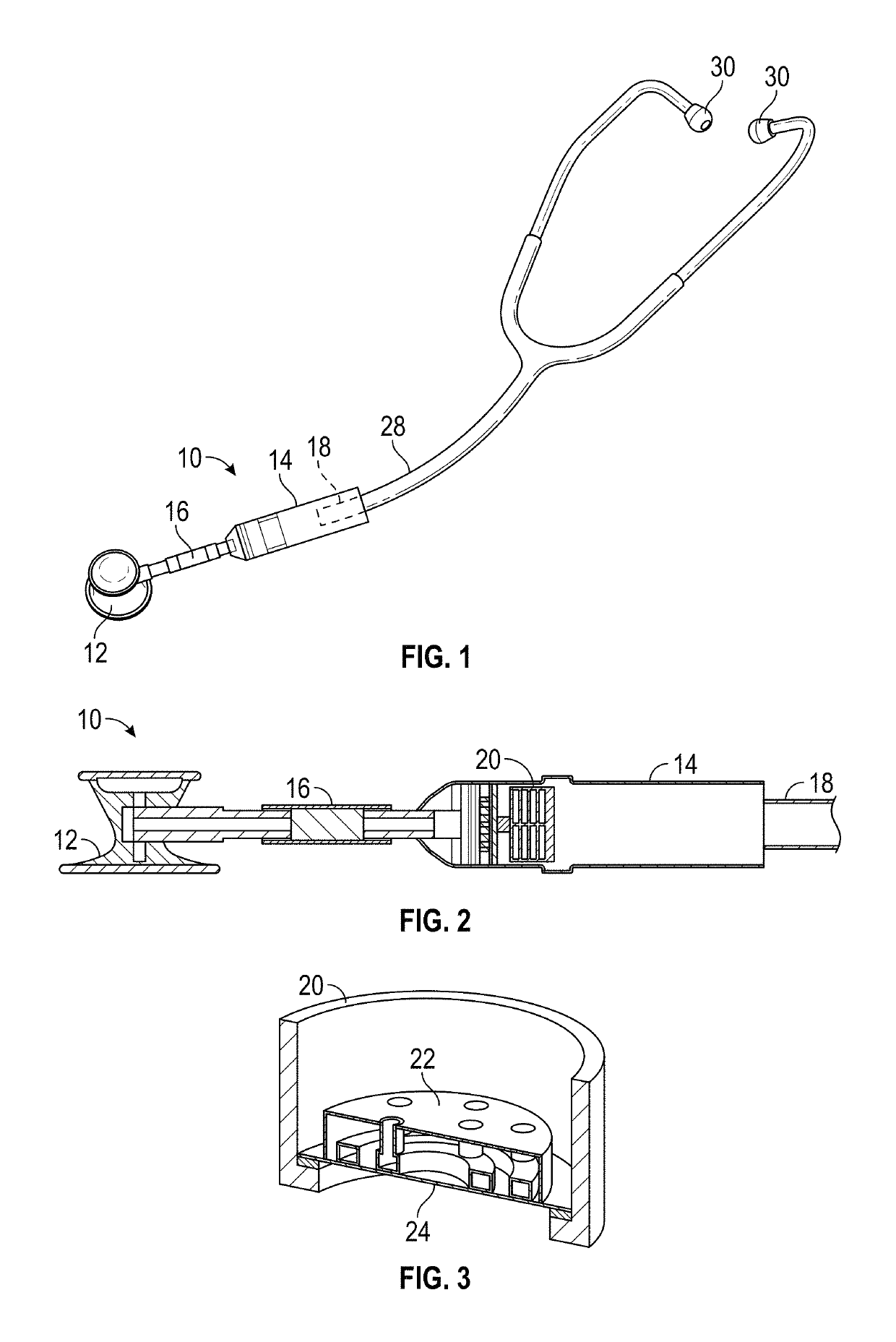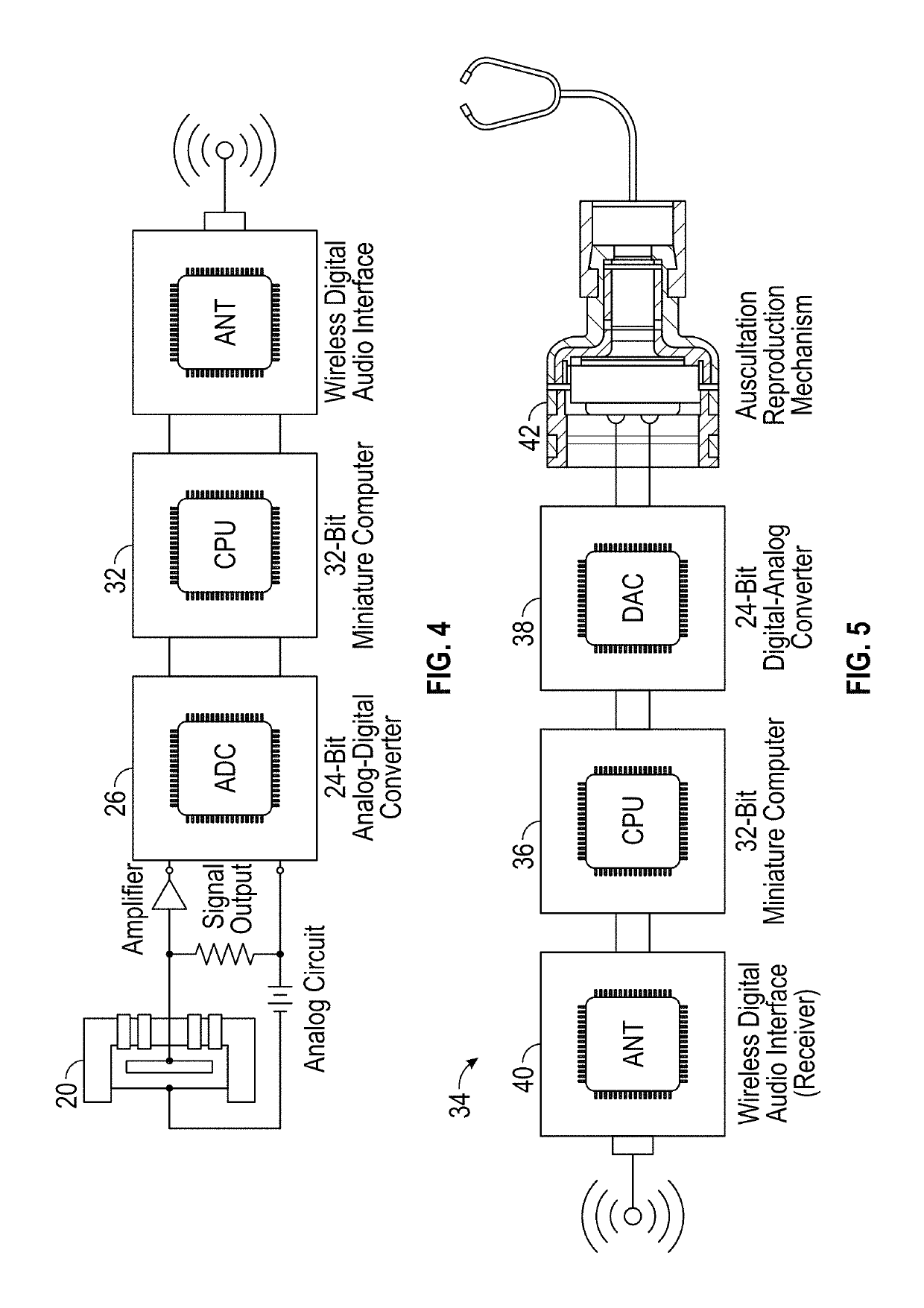Wireless stethobroadcasting instrument for medical training
a stethoscope and stethoscope technology, applied in the field of effective mediating auscultation training for medical students, can solve the problems of difficult distinction, even for a trained ear, difficult distinction, etc., and achieve the effect of improving the learning curve and accurate auscultation
- Summary
- Abstract
- Description
- Claims
- Application Information
AI Technical Summary
Benefits of technology
Problems solved by technology
Method used
Image
Examples
Embodiment Construction
[0035]The instructor stethoscope of the present invention is generally designated by the reference numeral 10 in FIGS. 1 and 2. This instructor's device (ID) can be modeled in electrical terms with the exciter-resonator interaction scheme of, where noise propagation channels of sound are electrically synthesized in such a manner mechanical and electronic methods are used to prevent noise from being introduced into the system, and leaving the timbre untouched for the human ear's perception. Such discretization of the patient interaction simplifies the model of the resonator to a linear time-invariant system. This is accomplished by first directing the acoustics from the chestpiece 12 into a tunable stainless steel resonance chamber or tube 14, specially designed to amplify the typical frequency range of auscultation sounds emitted by the human body. The resonance chamber 14 exists only in the ID component of the invention, since students do not have need or control of this part. The ...
PUM
 Login to View More
Login to View More Abstract
Description
Claims
Application Information
 Login to View More
Login to View More - R&D
- Intellectual Property
- Life Sciences
- Materials
- Tech Scout
- Unparalleled Data Quality
- Higher Quality Content
- 60% Fewer Hallucinations
Browse by: Latest US Patents, China's latest patents, Technical Efficacy Thesaurus, Application Domain, Technology Topic, Popular Technical Reports.
© 2025 PatSnap. All rights reserved.Legal|Privacy policy|Modern Slavery Act Transparency Statement|Sitemap|About US| Contact US: help@patsnap.com


